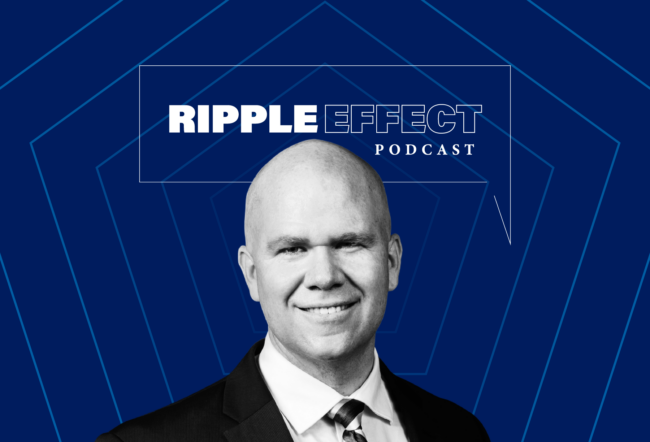After having escaped the worst effects of the global economic downturn, Indian banking now faces the best opportunity in financial services globally, according to Aditya Puri, CEO and managing director of HDFC Bank. He feels India could achieve double-digit GDP growth in two years, and provide low-cost banking models for the rest of the world. Against that backdrop, Puri shares his views on the opportunities and challenges for Indian banking with India Knowledge at Wharton at the recent Wharton India Economic Forum in Philadelphia.
An edited transcript of the conversation follows.
India Knowledge at Wharton: Let me begin by asking you about the impact of the global recession on Indian banking. What has it done to spreads and the cost of funds for Indian banks?
Aditya Puri: I presume you are talking about fundraising by the Indian banks overseas. Most Indian banks don’t raise funds for themselves; they are funded by deposits. The only time they give an overseas loan is when they have overseas funding available. During [the recession], for a temporary period, the spreads had widened a lot for Indian corporations and for Indian banks. But they have come back to normal and are now very competitive.
India Knowledge at Wharton: How has the slowdown impacted demand for credit within India?
Puri: With the global slowdown, naturally, there was an impact in India as well with our GDP [growth] slowing from about 9% to 6%. So for a temporary period, which is about six months of last year (2009), demand [for credit] did go down. We were growing at about between 24% and 27% in terms of credit demand. And that came down to sub-20%. In the last quarter, it has recovered and we are expecting to see 20%-plus growth in the coming year.
India Knowledge at Wharton: What is the medium-term outlook? Could you also talk about those industry sectors that are showing the most demand for credit?
Puri: In the medium-term, the prospects for India are bright. Depending upon what happens to global recovery and what we do about our infrastructure, subsidies and agriculture, there are varying estimates on GDP. But if you look at GDP growth, somewhere near 7.5% is definitely a given even if we don’t fix our problems. But if we get our infrastructure right and we get our agriculture policy right and we get our GST right (Goods and Services Tax, a new levy replacing existing levies proposed to be introduced in 2011) and we get our fiscal deficit right — I do believe there is a very good chance that we will get it right — then a double-digit [GDP] growth after two years is quite possible. Current estimates — neither the most optimistic nor the most pessimistic — are about 7% plus in fiscal 2010 but 8% to 8.5% in 2011. [The Indian government is] hoping for double-digit growth on the assumption that they would have been able to sort out inflation and they would have been able to make progress in sorting out infrastructure subsidies and the deficit. The budget has taken some good steps, so there is a reasonable chance we’ll have double-digit growth within two years.
As far as the sectors are concerned, naturally one of the big boosts in spending is in infrastructure. There’s a lot of spending in agriculture [and on] health, food and education. Once you have this you have the add-on demand for cement and steel. The consumers are doing well. Most of the transportation industry, especially passenger cars, has had a record year.
India Knowledge at Wharton: I’m sure there are many things to learn from the U.S. financial market overhaul, the regulations that have come in place after the crisis. Is there anything the Indian banking sector could learn from the U.S. experience, especially when it comes to things like overleveraged consumers?
Puri: There are a lot of things to learn in terms of not making the same mistakes. But what we have to rely on is that what happened in the U.S. is probably a multiple of things. It’s not just the overleveraged consumer. It is the U.S. government spending way beyond its means because the dollar was a reserve currency. It is the exotic derivative. It brought leverage into the market as well as a lack of understanding of who was responsible for what and what the actual values of the assets were. Also, this notion that the market will determine everything in a fair manner and will distribute risk and will price it right proved wrong; it went into mediation and regulation became a domain of the open market. It was a free-for-all.
So when you look at it and you look at what caused the crisis, it was a lot of financial intermediation moving outside the regulatory ambit, a number of players not clearly defining their roles [and] high leverage. People who have money want to give it to people who don’t have the money. But naturally the people who give the money require liquidity and security. That requires management of credit, market and maturity risk, and the people who were supposed to manage it. But the opaqueness that came into derivatives and who was selling what and who was responsible resulted in something that in theory was supposed to distribute risk and give investors the appropriate tenor and return that they wanted. It didn’t work. Even the mathematical models didn’t work because human beings in a crisis react with a herd behavior. So we did have a big problem and you allowed borrowing on the basis of asset values going up [in the future]. It not only created an asset bubble but over-leverage for the consumer.
Fortunately, in India, [banks] didn’t open up to what they didn’t understand and what we also as banking practitioners did not understand. And now it turns out the people who professed to understand it also did not understand it. The regulators played a major part. Part of the regulation that people are talking about now [is what] the previous [Reserve Bank of India] governor Y.V. Reddy … had taken into account by adjusting risk weight [and] by adjusting the provisioning requirements so that you did not build up bubbles. When we look at the Indian financial system we are clearly looking at the fact that you shouldn’t have too much leverage. You need to have clear definition of regulatory roles. All financial intermediaries must come in and you must have macro prudential regulation that goes beyond only monetary policy.
India Knowledge at Wharton: India has not had a financial market crisis in a long, long time. There must be something that Indian banking is doing right besides these strong regulatory checks and balances.
Puri: Yes. I think the banking system itself has been conservative, has been reasonably responsible. While not going overboard they have met the credit needs. A crisis normally [occurs] as a snowballing effect of excess leverage and borrowing during good times, when you presume that nothing will go wrong. But the world knows that what goes up must come down. [Indian] bankers have been conservative, which is a good thing.
India Knowledge at Wharton: Let’s switch lanes to your own management strategy. In 2007 you were conferred the Asian Banker’s leadership excellence award. Could you tell us about one big leadership challenge you have faced in your career and how you overcame it?
Puri: That’s tough, actually. When you look at leadership now, it has changed very substantially. Leadership now is more [about being] first among equals. It is not so much [of] a one-man show. It is a question of setting — you probably provide the vision. You jointly set the strategy. And you monitor the execution. So I would be taking too much upon myself if I said that my leadership did it. I think it was a joint team with me being the first among equals. You have a lot of challenges naturally in a day-to-day environment. But I wouldn’t be able to describe just one as a challenge. We (at HDFC Bank) went through multiple [challenges]. When we started, we didn’t have [the requisite communications] connectivity. Well, we wanted an online real-time bank. When we started, we wanted to go into consumer banking but traditional consumer banking didn’t exist — [we did not] have a credit bureau. You don’t have [credit] history. You don’t have [information on the] probability of default. And in retrospect, it probably was good, because we didn’t depend too much only on figures and exercised judgment as well.
India Knowledge at Wharton: You have been a big advocate of rural banking and also introducing new technology into banking services. Could you talk about the opportunity in rural India? It is not an easy market to penetrate because of inadequate infrastructure. You also have the state sector that is very dominant there. How do relatively younger private banks like yours use technology to innovate and build market share rapidly in rural India?
Puri: Technology is very important where you don’t have infrastructure because it provides you a distribution reach. Frankly, even if you take the state sector [and] if you have to put up bricks and mortar on it across the length and breadth of the country, it is not going to be economically viable. So we need to look at different ways of being able to [compete]. Not only is it not economically viable for us, it is not beneficial because of the last-mile problem even to the rural consumer because if he has to travel to bricks-and-mortar [bank branches], it is going to be too expensive for him. In addition, you will never be able to build up credit history, which will allow him to become a creditworthy customer and create viability for himself financially.
So we have been looking at the fact that between 300 million and 450 million people still live in rural areas. Prosperity is coming slowly and steadily but we need to be able to substitute the moneylender. We need to be able to provide [the rural consumer] finance, which he is able to repay. Just providing finance that he can’t repay is not fair. We are looking at microfinance, which creates financial viability by providing him production, marketing and raw material support coupled with finance, i.e., creating a viability business.
We are looking at providing finance to the individuals where they have been going to the moneylender against appropriate collateral because we do want him to be honest. We want him to inculcate the habit of paying back. We are taking jobs into the rural areas rather than having everybody come to Mumbai. We do believe that we will be able to create a microfinance initiative making money. We think it will provide return on equity in two years.
We have tied up with telecommunication companies [and] will be able to take banking to the mobile [phone]. This will get further security when you get 3G [mobile phone services]. We will be able to take it right into the interiors [of rural India]. There is enough collateral in terms of gold and other such instruments available even with low-income people or the middle class. So, even if say 20% or 30% of these people come into what is defined as “bankable work” today that doubles your market.
We look at it in two ways. One, it is our paying our dues to society. Two, we are creating models that will enable us to compete very effectively. Say, in two or three years from now if I can create a profitable business in microfinance — we think we are almost there — that is an average loan size of Rs15,000, which is about US$300. If I can create a viable business on a ticket size of US$300 with a cost-to-revenue of less than 40%, I can take that model overseas and actually change banking.
So these are the models that will ultimately come, which will completely change how you deliver, what price you deliver, what the size is [and] what segment you deliver at. That will give you the ability not only to have models [for] India but [those that] are applicable in any country with a large land mass.
India Knowledge at Wharton: Increasing penetration in rural India is easier said than done. Rural indebtedness continues to be a serious problem, and the government’s loan forgiveness programs have covered only organized sector bank loans, and not those made by moneylenders. You are responsible to your shareholders and profit maximization is your goal. But if you were to be an agent of social change like the state-owned banks that assume that role, where would you begin?
Puri: I think this business of loan waivers is over. I’m not advocating that it is a good idea or it’s a bad idea in terms of creating a precedent but I think more is being made of it than necessary. [The loan waiver] was something really for people at the bottom of the pyramid and the percentage of loans involved is some 0.001% [of the total loans]. I don’t think we should get stuck in that because the way the newspapers report it is a bit sensational, but on the ground it’s not that much of an issue.
Definitely, it is our intention to be an agent of change. We brought the microfinance rate down substantially compared to the [other] microfinance institutions. We are today the second largest lender in microfinance after the State Bank of India. We have taken our products into the interior [Indian markets] as a combination between the telephone [and] using [conventional] distribution channels… and [appointing] our own agents. I do believe that if managed properly, which is a question of cost, and deal fairly [with customers, we will succeed]. We find that the people in the rural areas are very happy to deal with us — fair, transparent and clean dealing. Reducing costs through using alternative delivery channels ensures that you can also reduce operating costs [with] appropriate technology and scale. I think we can make a very sizeable contribution.
We are looking to make 10 million families financially viable at the bottom of the pyramid in the next five years — that is 40 million people. That does not include the regular lending that we would do to the top 20% of those 500 million people who will become prosperous with the trickle-down effect. So it is an absolutely fantastic opportunity in financial services. In my view [it is] the best opportunity in financial services globally.
India Knowledge at Wharton: We have seen in recent years the rise of strife within society — the gap between haves and have-nots. What does all that mean for the agenda for Indian banks? One speaker this afternoon talked about civil disobedience in India 25 years from now. That was very ominous.
Puri: Banks are just one component of society. Is it an issue for society? Absolutely. I think the fact that you cannot have 30% or 40% of your population below the poverty line is an absolute given. The fact that you can or cannot have two Indias and continue without some kind of civil disobedience at some point in time is also a given. The fact that you cannot get elected today in large parts of the country unless you benefit them (those regions and the electorate there) is also a given. So politically, socially, economically this is an imperative.
The self-interest of most people will ensure that what has not happened will happen. So I do believe that politically we will see better schemes. We will have a better direction of subsidy. We will have better schemes to make sure that the underprivileged are taken along with the people who are doing well. We will see that this will create a [new] market. We will see better distribution. This will come about because each part of society recognizes that this is not a tenable situation.
India Knowledge at Wharton: Thank you so much joining us.
Puri: Pleasure.



